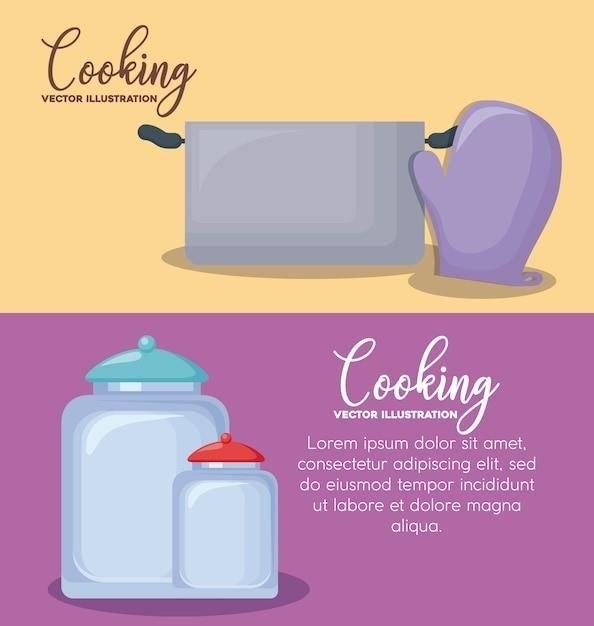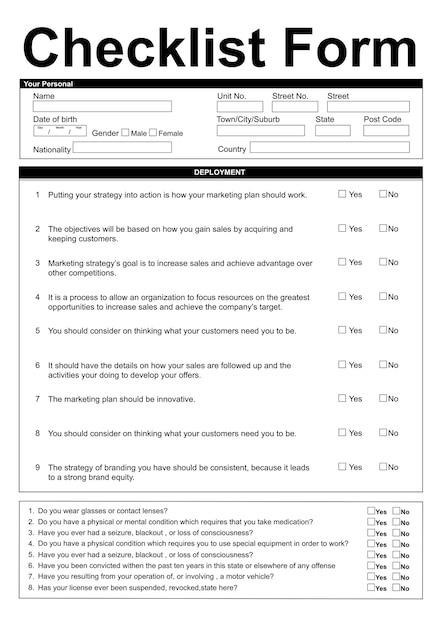Understanding the Kingdom Man Concept
The Kingdom Man concept is a biblical framework that emphasizes the role and responsibilities of men in God’s kingdom․ It’s a call to men to live out their God-given purpose and authority‚ not just in their personal lives but also in their families‚ communities‚ and the world․ This concept is explored in detail in Tony Evans’ book‚ “Kingdom Man⁚ Every Man’s Destiny‚ Every Woman’s Dream‚” which aims to empower men to understand and embrace their role as Kingdom men․
The Cry for a Kingdom Man
The cry for a Kingdom Man echoes through the halls of society‚ a yearning for a different kind of man‚ one who embodies strength‚ integrity‚ and leadership grounded in biblical principles․ This call for a true Kingdom Man stems from a deep-seated longing for a restoration of values‚ a return to the principles that defined true manhood in the past․ It’s a cry for men who will stand as pillars of strength‚ not just physically but also morally and spiritually‚ leading with compassion and wisdom‚ protecting and providing for their families‚ and serving their communities with honor․ The need for such men is evident in the challenges facing our world today‚ where moral decline‚ family breakdown‚ and a lack of true leadership are rampant․ The cry for a Kingdom Man is a call for a return to biblical principles‚ a call for men to step up and fulfill their God-given purpose‚ to reclaim their role as leaders and protectors‚ and to build a better future for themselves‚ their families‚ and their communities․
The Concept of a Kingdom Man
The concept of a Kingdom Man is rooted in the belief that every man has a unique and profound purpose within God’s kingdom; This purpose goes beyond simply fulfilling personal ambitions or achieving worldly success․ It’s about understanding and embracing one’s identity as a son of God‚ a chosen servant called to advance His kingdom on earth․ A Kingdom Man is characterized by his unwavering faith in God‚ his submission to His authority‚ and his commitment to living a life that reflects His values․ He is a man of integrity‚ strength‚ and compassion‚ who leads with wisdom and humility‚ seeking to build up and bless those around him․ He is a protector and provider for his family‚ a leader in his community‚ and a servant of the world‚ all driven by a desire to honor God and advance His kingdom․

Becoming a Kingdom Man
Becoming a Kingdom Man is a journey of transformation‚ a process of aligning one’s life with God’s purpose and embracing the responsibilities that come with being a man of God․
A Man’s Call to Greatness
The Kingdom Man concept is a call to greatness‚ a challenge to men to step into their God-given potential and live a life of purpose and impact․ It’s not about achieving worldly success or accumulating material wealth‚ but about fulfilling the divine design for their lives‚ impacting their families‚ communities‚ and the world for good․ This call to greatness is rooted in the understanding that men have been created in the image of God‚ endowed with unique abilities and responsibilities․ It’s a call to embrace their role as leaders‚ protectors‚ and providers‚ not in a domineering or self-serving way‚ but with humility‚ love‚ and a commitment to advancing God’s Kingdom․
The Power of One Real Man
The Kingdom Man concept emphasizes the transformative power of one real man living out his God-given purpose․ It’s a reminder that true leadership and influence don’t come from titles‚ positions‚ or worldly achievements‚ but from a heart that is yielded to God‚ a life that is lived in alignment with His principles‚ and a commitment to serving others․ When a man chooses to follow God’s blueprint for his life‚ he becomes a beacon of hope and inspiration to those around him‚ impacting his family‚ community‚ and the world in ways that ripple far beyond his immediate sphere of influence․ The power of one real man lies not in his strength or ability‚ but in his willingness to walk in obedience to God‚ to live a life of integrity‚ and to make a difference in the lives of others․
Aligning Yourself for Impact
Aligning yourself for impact within the Kingdom Man framework involves more than just understanding your role and responsibilities; it demands a conscious and deliberate commitment to living a life that reflects God’s heart and purpose․ This means aligning your thoughts‚ actions‚ and motivations with His Word and His will․ It involves seeking His guidance and direction in every area of life‚ prioritizing His kingdom above personal desires‚ and actively pursuing opportunities to serve and make a difference in the world․ By aligning yourself with God’s plan‚ you open yourself up to His power and enable Him to work through you in extraordinary ways‚ creating a ripple effect that touches the lives of countless others․
The Real Meaning of Headship
The concept of headship within the Kingdom Man framework is often misunderstood․ It is not about dominance or control but about selfless leadership and service․ A Kingdom Man understands that headship is a position of responsibility‚ not privilege․ It means leading by example‚ serving those under his care‚ and prioritizing their needs․ It’s about being a protector‚ provider‚ and guide‚ not a dictator․ True headship is rooted in humility‚ love‚ and a deep understanding of God’s Word․ It requires a man to relinquish personal ambition and put the needs of his family‚ community‚ and the kingdom first․ By embracing this understanding of headship‚ a Kingdom Man transforms from a mere leader to a servant-leader‚ leaving a lasting legacy of love‚ integrity‚ and faithfulness․
Dominions Roar
The concept of “Dominions Roar” within the Kingdom Man framework speaks to the inherent authority and power entrusted to men by God․ It’s not about brute force or worldly dominance but a spiritual authority that stems from aligning oneself with God’s will and purpose․ This dominion is not meant to be exercised selfishly but used to bring about positive change‚ protect the vulnerable‚ and advance God’s kingdom․ It’s about wielding influence with integrity‚ wisdom‚ and compassion‚ using one’s gifts and talents to uplift and empower others․ This roar isn’t a shout of aggression but a confident declaration of purpose‚ a commitment to living out God’s plan for one’s life‚ and a willingness to stand up for what is right‚ even in the face of opposition․
Equipped to Rule
The Kingdom Man concept emphasizes that men are not just called to rule but also equipped to do so effectively․ This equipping comes through a deep understanding of God’s Word‚ a commitment to spiritual growth‚ and a willingness to submit to God’s authority․ It involves developing character traits like integrity‚ humility‚ compassion‚ and wisdom‚ which are essential for leading with justice and righteousness․ This equipping also involves recognizing and utilizing the unique gifts and talents that God has bestowed upon each man‚ using them for the advancement of His kingdom․ The journey of a Kingdom Man is one of continuous learning‚ refining‚ and applying the principles of God’s Word to all aspects of life‚ becoming a vessel through which God’s power and grace can flow to impact the world around him․
Accessing Your Authority
The Kingdom Man concept recognizes that men have been given authority by God‚ not to be exercised for personal gain or dominance‚ but for the purpose of serving and advancing His kingdom․ This authority is not based on worldly power or influence but on a deep connection with God and a willingness to submit to His will; It involves understanding that true strength lies not in control or manipulation but in humility‚ love‚ and a desire to empower others․ Accessing this authority requires a conscious effort to align one’s life with God’s principles‚ developing a heart of service‚ and seeking wisdom and guidance through prayer and the study of His Word․ It’s about recognizing that true authority is not self-derived but God-given‚ and it’s a privilege to be used for the benefit of others and the advancement of God’s kingdom․
Touching Heaven‚ Changing Earth
The Kingdom Man concept emphasizes that men are called to be agents of change‚ bringing God’s kingdom principles to bear on the world around them․ This transformation starts with a personal commitment to living a life that reflects God’s character‚ but it extends far beyond personal piety․ It involves actively engaging in the challenges and opportunities of everyday life‚ seeking to bring justice‚ peace‚ and reconciliation to a broken world․ Kingdom men are not meant to be passive observers but active participants‚ using their God-given talents and resources to make a positive impact on their families‚ communities‚ and the world․ This involves taking a stand for what is right‚ even when it’s unpopular‚ and demonstrating the love and compassion of Christ in all their interactions․ By living out their faith in a practical and tangible way‚ Kingdom men touch heaven and change earth‚ making a real difference in the lives of others․

Keys to Claiming Your Destiny
This section delves into practical resources and tools that can help men on their journey to becoming Kingdom men․
The Kingdom Man Study Guide
The “Kingdom Man Study Guide” is a valuable resource for men who want to delve deeper into the principles of biblical manhood․ This guide‚ designed to accompany Tony Evans’ book‚ “Kingdom Man⁚ Every Man’s Destiny‚ Every Woman’s Dream‚” provides a structured approach to understanding and applying the concepts presented in the book․ It features discussion questions‚ reflection prompts‚ and practical exercises that encourage personal growth and application․ The study guide is available in various formats‚ including print‚ digital‚ and video‚ making it accessible to a wide audience․ It is a powerful tool for individual study or group discussions‚ fostering a deeper understanding of the Kingdom Man concept and its implications for men’s lives․
Kingdom Man Sermon Notes
For pastors and preachers seeking to deliver impactful sermons on the Kingdom Man concept‚ “Kingdom Man Sermon Notes” offer a valuable resource․ These notes provide a comprehensive framework for crafting engaging and insightful sermons based on Tony Evans’ teachings․ They include key points‚ scriptural references‚ illustrations‚ and practical applications‚ making it easier to convey the message effectively․ The sermon notes cover a wide range of topics related to biblical manhood‚ such as leadership‚ responsibility‚ and spiritual growth‚ providing a solid foundation for powerful and inspiring sermons․ Whether used for individual preparation or shared with a team‚ these notes equip preachers to effectively communicate the transformative message of the Kingdom Man concept to their congregations․
Kingdom Man Book Reviews
Reviews of Tony Evans’ “Kingdom Man⁚ Every Man’s Destiny‚ Every Woman’s Dream” highlight its impact on readers․ Many praise the book’s clear and accessible approach to biblical manhood‚ emphasizing its practicality and relevance to modern life․ The book’s focus on equipping men to understand their God-given role in society and their families resonates deeply with readers․ Numerous reviews mention the book’s transformative influence on personal lives and relationships‚ inspiring men to embrace their responsibilities and live out their purpose․ Some reviews also acknowledge the book’s potential for sparking meaningful conversations about manhood and its implications for both men and women․ Overall‚ the reviews of “Kingdom Man” paint a picture of a book that has profoundly touched the lives of many‚ inspiring them to live more fulfilling and purposeful lives․
Kingdom Man⁚ Every Man’s Destiny‚ Every Woman’s Dream
Tony Evans’ “Kingdom Man⁚ Every Man’s Destiny‚ Every Woman’s Dream” is a powerful and impactful exploration of biblical manhood․ The book delves into the concept of a Kingdom Man‚ a man who lives out his purpose and authority in God’s kingdom․ It’s a call to men to embrace their God-given role in their families‚ communities‚ and the world․ The book offers practical insights and guidance on how men can cultivate the characteristics of a Kingdom Man‚ emphasizing the importance of living under God’s authority while leading with strength‚ compassion‚ and wisdom․ It’s a compelling read that challenges and inspires men to step into their full potential‚ becoming the men God intended them to be․





















